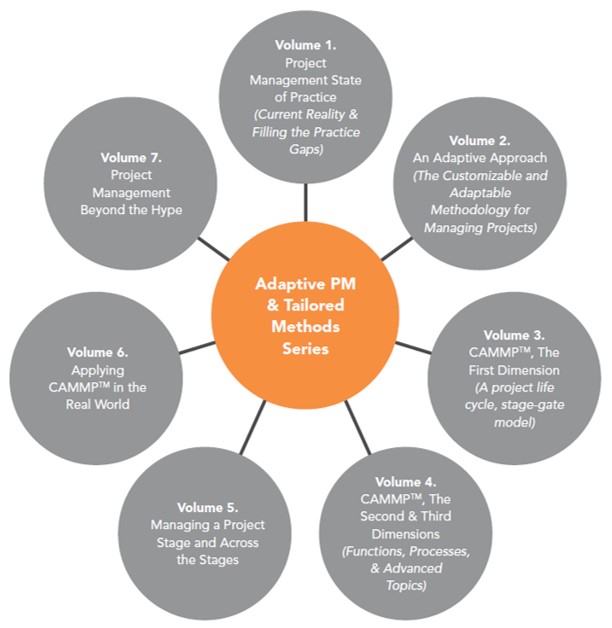In an earlier e-book, we had discussed the project management state of practice and the need to close the gaps. In this e-book, we start to present a project management adaptive approach that would be the knowledge foundation to transform the organizational projects’ performance.
The E-Book Series
Furthermore, this e-book is the second in a series of seven e-books that address the current reality and offer a sustainable and methodological approach that can be used for all types of projects, regardless of industry, or the project size and complexity.

What Is the foundation for the Project Management Adaptive Approach?
In this first section of the e-book, we present the foundation for the project management adaptive approach. In other words, this approach is a methodological process that integrates project management into the organizational asset management system. As a result, the methodological approach must cover projects end-to-end, or what we like to call concept-to-closure, C2C.
Rationale and Perspective for the PM Adaptive Approach
What are the rationales for this project management adaptive approach? The following are some essential points:
- It has to be customizable and adaptable to fit the different types of projects.
- Also, it is necessary to have a full project life cycle perspective.
- The approach needs to consider the perspective of different stakeholders, although our focus is on the project owner’s perspective.
- Because the approach is from the project owner perspective, it should integrate with asset management.
What Are the Fundamental Concepts?
In addition to the rationale and perspective, we addressed the fundamental concepts for the project management adaptive approach. These include:
- Project management is a disciplined approach.
- The project life cycle must incorporate stage gates. Therefore, we address the importance of the stage gates.
- Further, we discuss the stage-gate process in relation to risk and innovation.
- Finally, we present a short case study on how the stage-gate process did not eliminate the need for innovation on a megaproject.
CAMMP™, the Project Management Adaptive Approach
Further to the discussion on the rationale and fundamental concepts, we present the principles for building a project management methodology. Consequently, this work led to CAMMP™, the Customizable and Adaptable Methodology for Managing Projects™. Therefore, in Chapter 4 we present the CAMMP™ Manifesto, which includes the critical success factors, CSF for the project management adaptive approach.
Introduction to CAMMP?
The second section of the book addressed CAMMP, directly. Therefore, we started with a chapter that introduces the SUKAD model, the methodological approach’s main characteristics. Further, we discussed the new things that CAMMP is introducing along with the things that exist and CAMMP adopted.
Next, we briefly explained the CAMMP model, including explaining the terms’ phases and stages, stage deliverables, and stage gates. Further, we briefly elaborated on every phase and stage.
What Are the Three Dimensions of CAMMP?
Finally, we explained that CAMMP is a three-dimensional model. These three dimensions are:
- The project life cycle model would be customized and adapted to fit a given industry, organization or project type.
- The management processes required to manage a given stage, which we had adopted from ISO 21500 and modified.
- Finally, the advanced topics that would help an organization elevate their projects’ performance, which includes sustainability, competence, leading practices, and project success.
Conclusion
In conclusion, with this second book in a seven-book series, we provided an overview of the project management adaptive approach, which we labeled as CAMMP™, the Customizable and Adaptable Methodology for Managing Projects™. CAMMP™ is part of the SUKAD Way™ for Managing Projects, the core outcome of the SUKAD Knowledge and Innovation work.
To review the book and obtain a copy, click here.
